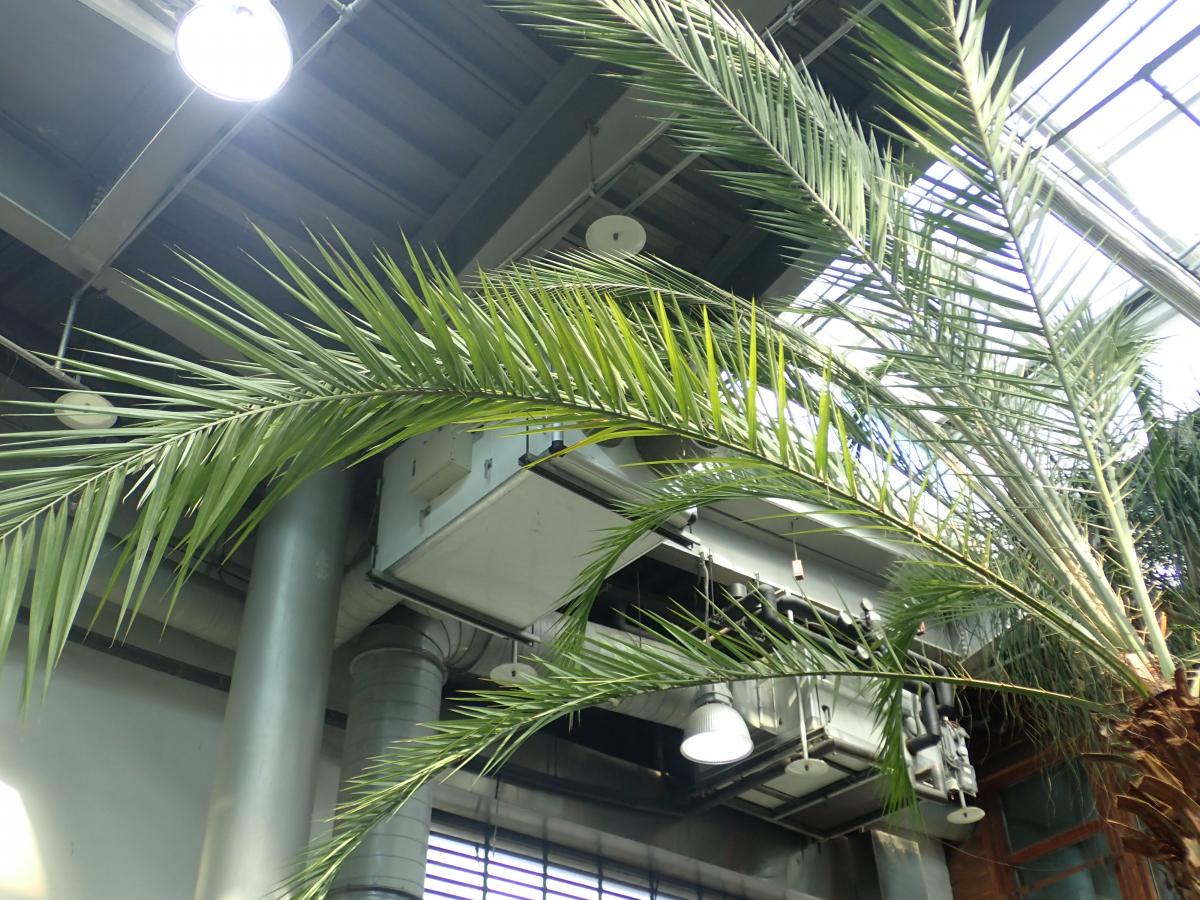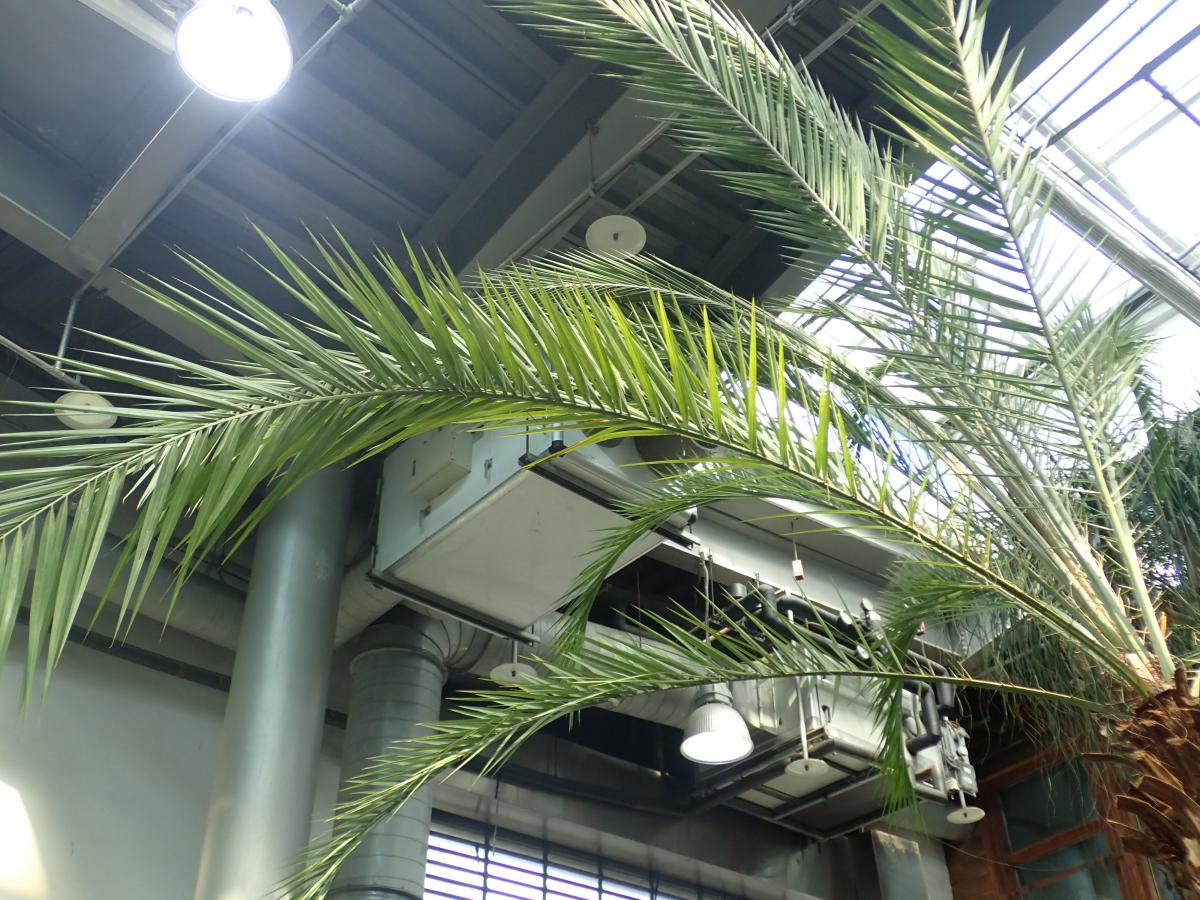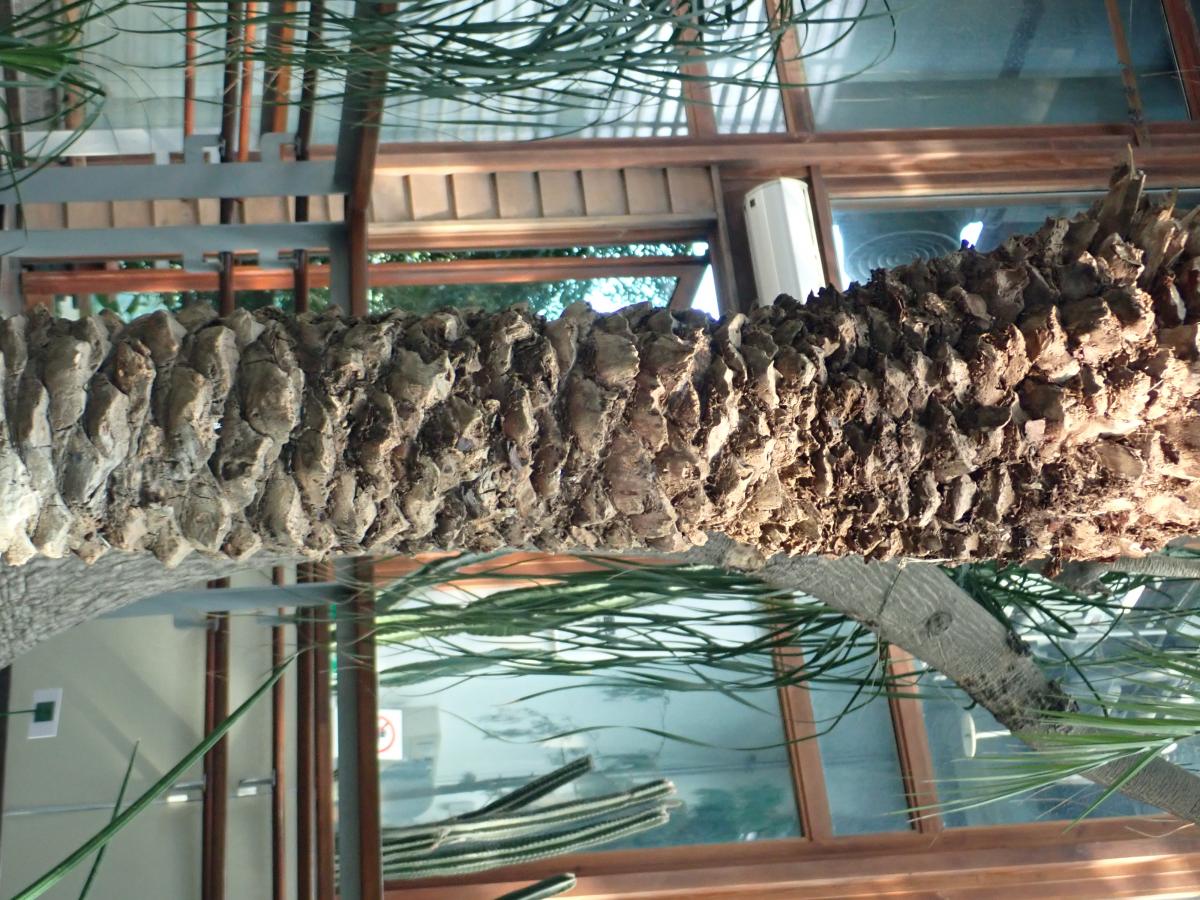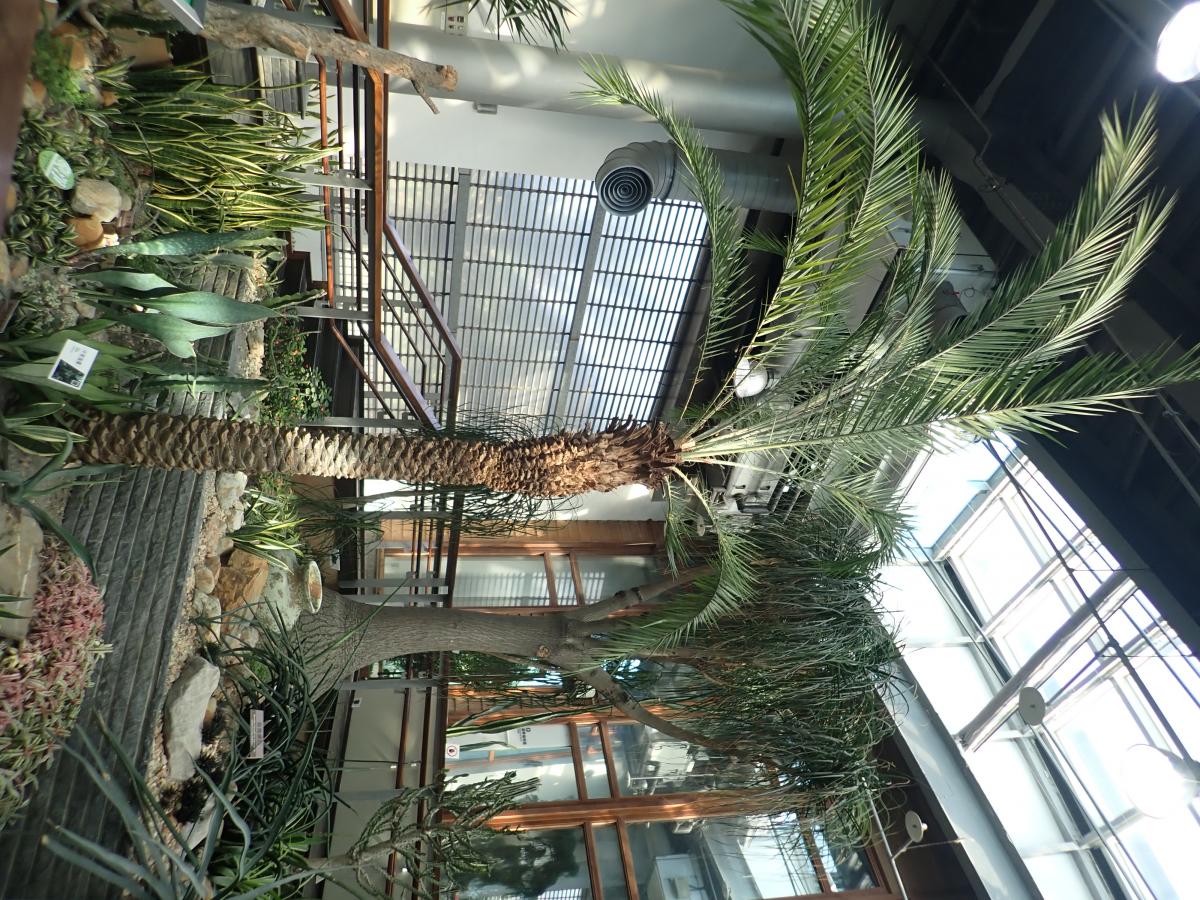棕櫚科
學名:Phoenix dactylifera L.
英名:Date Palm、Date
海棗原產非洲東北部至中亞地區,是基督教、回教與阿拉伯文化的重要植物,西元前6千年人們就開始種植海棗。海棗的果實就是市場上俗稱的椰棗,果實非常甜能提供充足熱量,除了富含鐵質、膳食纖維,還能製糖、釀酒。葉片可用來編織、裝飾神殿或覆蓋屋頂,而且是沙烏地阿拉伯的國徽代表植物,在沙漠具有遮蔭、防風以及景觀用途。
Native to northeastern Africa to Central Asia, Date Palm is an important plant in Christianity, Islam and Arab culture. People began growing Date Palm in the 6th millennium BC. The fruit of Date Palm is commonly known as Dates on the market which is very sweet and provides sufficient calories. In addition to being rich in iron and dietary fiber, it can also be used to make sugar and wine. The leaves can be used to weave, decorate temples or cover the roof. It’s the iconic plant printed on the national emblem of Saudi Arabia. It can also serve as shade, windbreaker and landscaping plant in the desert.
海棗屬常綠喬木,原產非洲東北部至中亞,在非、亞洲熱帶地區廣泛栽培。樹高可達20m,樹冠展幅6~10m。葉長4~6m;葉柄有刺;劍形小葉約150片,長30cm,寬2cm。雌雄異株。花朵微小,果實長橢圓形。
An evergreen tree of the genus Phoenix, native to Northeast Africa to Central Asia, and commonly cultivated in tropical regions of Africa and Asia. Tree height up to 20 m, canopy span 6-10 m. Leaves 4-6 m long; petiole spiny; leaflet sword-shaped approx. 150 pieces, 30 cm long and 2 cm wide. Dioecious, flowers tiny and fruit oblong.
栽培:全日照通風環境下可生長良好,適合排水良好的鹼性介質。介質乾就澆水,每季施用一次長效性肥料。下垂老葉必須剪除。播種至開花至少需要5年以上,若要結果須授粉。
This plants thrive in full sun and airy conditions; alkaline medium with good drainage preferred. Water the soil when it’s dry and apply long-active fertilizer once a season. Remove drooping old leaves. It usually takes at least 5 years from sowing to flowering, and pollination is required for fruiting.
中東地區重要的果品食物。人工栽培有7,000年歷史,在回教與基督教宗教上均有重要意義,於歷史文化發展上不可或缺。果實可以生食或曬乾食用,稱為椰棗或海棗;糖份高可以製糖或發酵製醋。花序柄的汁液可以釀酒,葉片可編織日常用品或覆蓋屋頂。
It’s an important fruit food in the Middle East with a history of 7,000 years of artificial cultivation. It is greatly significant in both Islam and Christian religion and indispensable for the historical and cultural development. The fruits can be eaten fresh or dried, and is called ‘date’; it’s highly sugary, used to make sugar or vinegar after fermentation. The sap of the pedicel can be used to make wine while the leaves can be woven into daily necessities or covering of the roof.




